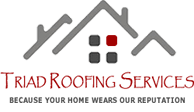When inspecting your roof the National Roofing Contractors Association (NRCA) recommends that a roof inspection should be conducted twice a year preferably the spring and fall.
To begin your inspection start inside, grab a flashlight and head to the attic.
Things to look for in the interior of your home:
- Places where the roof deck is sagging
- Signs of water damage or leaking
- Dark spots and trails
- Outside light showing through the roof
When inspecting the exterior of the roof, pay particular attention to things such as damaged flashing, missing shingles, curling, blistering, buckling, rotting and algae growth (more so in states with humid climates).
Things to look for on the outside of your roof’s home:
- Visually inspect your roof for cracked, torn, bald, or missing shingles.
- Scan the roof for loose material or wear around chimneys, vents, pipes, or other penetrations.
- Watch out for an excessive amount of shingle granules (looks like large grains of sand) in the gutters or bottom of downspouts—this is a sign of advanced wear.
- Check for signs of moisture, rot, or mold. Note that wet spots may not be directly under your faulty shingle; water can travel down to its lowest spot before it drips. Mold, fungi, and bacteria can grow quickly, within 24 to 48 hours of a water-related problem.
- Examine the drainage and make sure gutters and downspouts are securely attached. Also, make sure all drains are open and allow water to exit, and all gutters and downspouts are free of debris.
- Check that all bath, kitchen, and dryer vents go entirely outside of your home, not just into the attic space.
How to determine if your home’s roof has these issues
Remember, safety first and if you feel uncomfortable with a ladder, heights, or your balance don’t hesitate to call Triad Roofing Services at 336-540-0001 or visit us at www.triadroofingservices.com. We can provide you with a free estimate of the condition of your roof. You can start protecting your home with these simple observation skills. If you find problems, it doesn’t necessarily mean you need to replace your roof. Repairs can also be made.


